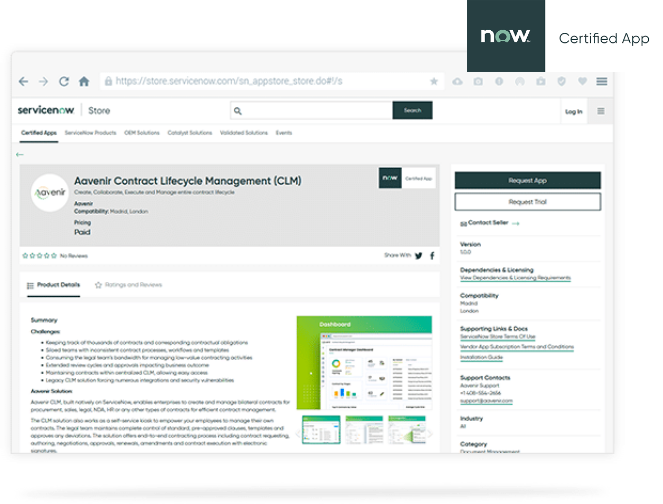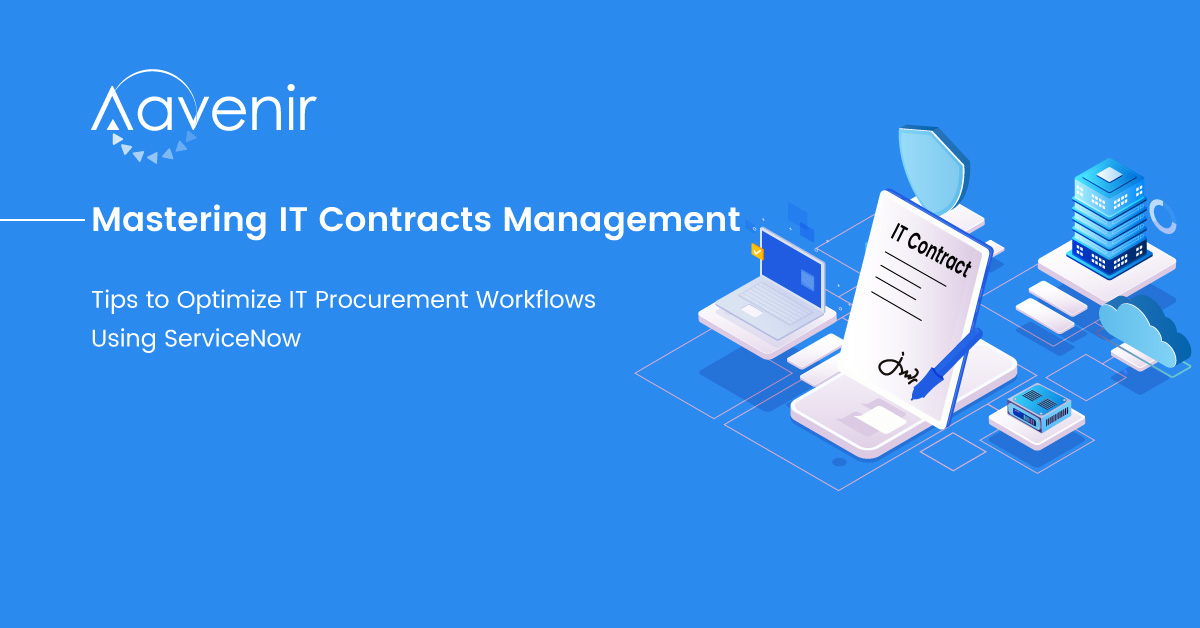IT Asset Management professionals, including many CTOs, detach themselves from the word ‘contract’. They consider delegating IT contracts management and authoring to the legal counsel and stay away from dealing with it. This hands-off approach may lead to major challenges in achieving desired results even if IT professionals have worked so hard identifying and negotiating for strategic IT sourcing and procurement.
While legal counsel can review the contracts from the legal perspective, you – the IT folks – need to review from the business standpoint. You know your business the best. A lawyer can neither anticipate what could go wrong in a software implementation nor recommend a clause specific to a business requirement for executing successful IT procurement.
For example, Legal can assume any IT software purchase would require a maintenance and support plan. As an IT professional, you would know that any software vendor relationship starts with the implementation or some type of customization. At least, in most deals, you won’t use the software until the vendor has finished with customization—possibly after months or longer.
As per the contract created by legal counsel monthly or annual maintenance fees start before even customization is done, and you may pay for nothing. In this case, IT can help redefine the software purchase contract by defining “Go-Live” as completion of required customization, or acceptance of the final customization deliverables. Then, provide that maintenance begins on Go-Live. By reducing the time span of maintenance and support you may save money for the organization.
With this classic example in mind, let’s understand more about IT contracts, key terms and conditions used in IT contracts, and how IT and legal can collaborate on a single workflow to manage end-to-end IT contract lifecycle better.
The Most Common Types of Contracts in IT Asset Management
IT contract encompasses any contract, which falls in the technology domain or under the budget/cost center of IT department. In other words, we are talking about IT procurement and sourcing contracts, i.e. anything procured as part of the IT department budget. Typically, IT contracts could be categorized as:
Non-Disclosure Agreement (NDA):
When either party (you and your vendor) needs to share/process any confidential information, this agreement dictates who can share what information (In general, the receiving party should not disclose the confidential information obtained as part of a business deal)
Software License and Service Agreement (SLSA):
When you procure any software license (SaaS or on-premise), this agreement dictates what are you buying, at what price support SLAs, and other related terms.
Hardware Maintenance and Service Agreement:
When you procure any hardware and its maintenance, the agreement deals with specificities of quality checks, maintenance schedule, return policy, etc.
Statement of Work (SOW):
If you are working with a System Integrators for any service-related activities, you would create an SOW to define scope, milestones, hourly (or milestone) rates, and other related terms Intellectual Property (IP) Contract – if you license someone’s IP, this contract will govern the IP licensing terms including ownership, royalty and the whole host of other things related to that IP license.
Key Terms and Conditions in IT Contracts Management:
While drafting the IT contract, the following terms should be reviewed thoroughly by the responsible IT professionals. To keep it simple, this article lists the specific terms and clauses that the IT team, as a business owner, must responsibly review and certify before signing any IT contract.
Commercial Aspects:
Based on the experience and quick external research, IT professionals should review the purchase price, any price escalations mentioned by the supplier, possible discounts for the IT products or services getting procured.
Service Level Agreements (SLA’s):
From an IT standpoint, this is the most critical section in the contract. For example, if you are procuring a managed cloud service or cloud infrastructure, SLAs, including % of uptime or support response time, should be carefully negotiated and agreed upon with the vendor. Most IT contracts mention SLA’s, but not many IT organizations track those SLA’s agreed in the contract. The tracking mechanism has to be agreed upon internally at the time of contract negotiation. IT team can decide a framework for a contract tracking mechanism until its end of life and consequent obligations management.
Security and Confidentiality Provisions:
While your legal department will certainly look at this section closely, you would need to focus on special security & confidentiality requirements, which your vendor should adhere to – based on the agreed solution architecture. For example, if your new cloud provider needs and integration with your Salesforce instance, you need to evaluate if your customer list is exposed to your vendor? Your legal team can never anticipate such confidentiality clauses and you need to guide the legal team to author a legal language, specifically for data handling.
In general, you should make sure that the contract covers the following adequately, as this activity is covered under Gramm-Leach-Bliley Act (GLBA). Ensure security of NPPI (Non-Public Personal Information)Protect against anticipated threads protect against unauthorized access and have mitigation plans in the event of a security breach proper disposal of confidential information and data maintain the confidentiality of proprietary information
Provision of Subcontractors:
While your vendor may further use the subcontractors, your organization still carries a liability under certain conditions. While preparing contracts and agreements, the subcontractors should be identified and a governance structure is should also be agreed upon with the vendor. Typical governance structure may include:
- Ownership and maintaining SLA’s of the deliverables should always be your vendor’s, and not of subcontractor
- Periodic monitoring and reporting should be managed by the vendor, as per industry standards
- Your vendor should provide empirical evidence of their own testing and auditing before submitting to you as finality
Compliance Documents:
Audits are never fun, especially when you have to run around gathering the documentation just before the audit. Hence, your vendors should provide periodic compliance documents – mostly on an annual/quarterly basis. The compliance document may vary based on your industry and criticality of the data, here is a probable list:
- SOC Reports
- PCI Compliance Certificates
- Certificate of Insurance
- Financial Reports
- Network Penetration and/or Vulnerability Assessment
- Intrusion Detection and Incident Response Plans
- Business Continuity and Disaster Recovery Procedures
Business Continuity and disaster recovery plan:
Not all your contracts may need this provision, but you need to weigh in need for this clause in the contract, depending on the criticality of the contract. However, if this clause exists, you should consider below provisions:
- Accessibility to your vendor’s BCP policies and procedures
- Independent testing requirements that demonstrate the ability to meet recovery objectives
- Frequency and availability of such test results
- Established recovery times for the return of critical business functions
- Back up responsibilities
- Cyber resilience
- Management of third party/outsourced business continuity
IT Asset Management Contract Workflow Considerations:
Most organizations have their own IT contract review and approval workflows for different scenarios and different geographies. When you automate an existing manual or semi-automated contracting process with an enterprise-class Contract Lifecycle Management (CLM) solution, IT teams will be able to better collaborate with the legal team to review and approve IT contracts. Here are the best practices for setting up the workflow in IT contracts:
- IT team should be able to create standardized, non-negotiable contracts using legal-approved IT Asset Management contract templates and should NOT need any review or approval steps. However, these contracts must to be executed within certain timeframe and status of such contracts should be visible on CLM software dashboard
- Enable tiered approval rules, i.e. different levels of approvals depending on the contract value
- Appropriate business department owner should always be one of the approvers
- Use only sequential review flow, unless your contract manager enjoys reconciling multiple documents in one final document before sending to counter party
- Consider having a ‘delegate’ or ‘backup’ approver in the workflow to ensure that contract is not stuck in absence of one of the approvers
Hopefully, armed with the above information, you would prefer to review the contracts carefully instead of bumping them to the legal department.
Now that you have made it so far, let me mention that you can easily manage your IT contracts on the most preferred ITSM platform – ServiceNow using Aavenir ContractFlow, a complete Contract Lifecycle Management software natively built-on ServiceNow platform. Aavenir ContractFlow facilitates all above mentioned IT contract management needs, right from your favorite ServiceNow platform. No need to trust new cloud SaaS, no need to sign a contract with another CLM software vendor – just Install Aavenir Contractflow from the ServiceNow app store and you are good to go.



